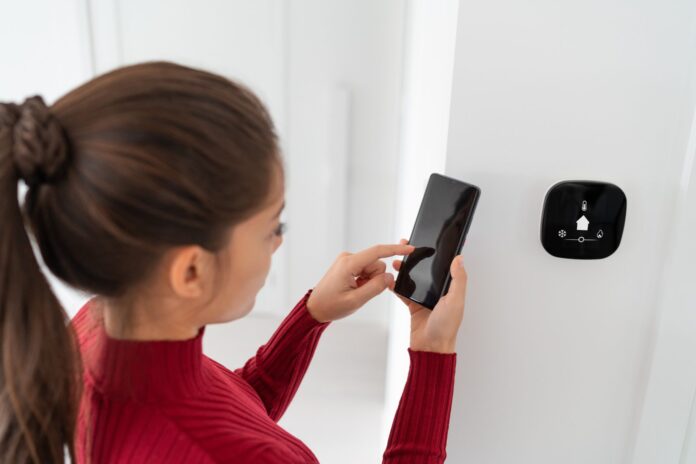Brace yourself: Winter is coming and this year looks tough. The double whammy of tight energy supplies and rising costs are placing pressure on consumers around the world. To make matters worse, Europe is already flagging energy restrictions. In Italy, for example, buildings will face an extra fifteen days without central heating this winter. Moreover, the government decree will force Italian consumers to turn their heating down by one degree and off for an extra hour a day.
Amidst the turmoil, smart energy solutions offer a glimmer of hope. Devices like smart thermostats help users to identify optimizations and curb consumption. As a result, costs fall and energy conservation improves. Not only are these benefits vital this year, but they could prove key in the climate crisis since buildings account for 40% of global energy consumption and one-third of greenhouse gas emissions.
Let’s look at three things to keep in mind this winter and beyond when it comes to smart energy and smart thermostats: conservation, cost and control.
Conservation: Cut emissions with optimizations
From energy to emissions, smart thermostats hold great promise in conservation. This is because these devices offer unparalleled insight into any home’s consumption patterns. They can account for occupancy and warm specific zones accordingly. Further, if the home is vacant, the system can automatically switch off. As a result of such optimization, smart buildings with built-in energy management systems save 30% to 50% more energy than regular buildings.
Especially this winter, smart thermostats will be vital in helping consumers to lower their energy consumption as well as meet any government restrictions. Setting maximum and minimum temperatures is possible from anywhere at the click of a button via an app.
Perhaps more important, however, is what these devices could mean for emissions and the environment. New data reveals that smart thermostat penetration could reach about 40 million homes in the United States by 2026. The report from Kagan notes that such devices would potentially save the country 15 terawatt hours (TWh) of electricity. While significant, greater adoption could produce greater results. If smart thermostats were installed in every home with an HVAC system by 2026, Kagan estimated the country could cut annual space heating and cooling energy consumption by 9%, or 45.4 TWh, per year. Such a saving would be the equivalent of the total energy used by the state of Mississippi in 2020.
Cost: The financial benefit of lower energy consumption
Of course, lower energy consumption equates to lower costs. Energy Star reports its certified smart thermostats to save on average 8% on heating or cooling. Meanwhile, according to Nest, users can save 10% to 12% on heating and 15% on cooling using a smart thermostat. This equates to an average annual savings of between $131 and $145 on consumer utility bills. These savings are even more valuable in the context of worldwide inflationary pressures and the looming threat of recession. In this economic climate, every penny counts.
Moreover, these devices automatically create energy reports on short-term and long-term consumption. Users can then compare this information to past reports and see how their efficiency has fared, as well as measure their consumption against others. Taken holistically, such insights can help people better understand energy use and change their habits, thus providing even more avenues to save on energy bills.
Control: Have the final say on your smart thermostat
It’s worth mentioning, however, one drawback to smart thermostats: Utility companies can seize control of the device in certain scenarios. This is what happened in September when thousands of households lost the ability to control their thermostats during a heatwave. The utility company in Colorado locked out users for hours due to an “energy emergency.” Similarly, in Utah, Rocky Mountain Power counts an opt-in, incentivised program by which the company can shut off home air-conditioning units for a few minutes at a time.
Be aware that utility companies don’t have blanket access to smart devices. Rather, those who experienced forced thermostat changes had signed up for specialty rewards programs. Xcel’s reward program in Colorado offers credit for enrolling in the customer program along with an annual cash benefit. At the same time, those who enrol agree to give up some control to save energy and money and “make the system more reliable.” So, keep such potential limitations in mind when signing up for any similar program.
Nonetheless, such incidents should encourage users to install any smart thermostat with certain customized settings. For example, it’s possible to prevent thermostat interference by installing your own system with a direct, peer-to-peer (P2P) connection. The connection type is key because P2P using public key infrastructure (PKI) technology for authentication provides a connection between devices which not only reduces latency but keeps out others.
Smart energy: Great potential this year and beyond
On the whole, the good far outweighs the bad of smart thermostats. These devices deliver important optimizations to lower emissions, costs and waste. Especially in the context of this year, these devices enable conservation as it is needed most. Likewise, looking ahead, these devices promise widespread energy efficiency in the face of the climate crisis.
Of course, users are best advised to purchase their own devices to prevent utility company interference. Additionally, they should change any device default passwords, leverage encryption and designate a private network to keep out bad actors. But, with these steps in place, there’s no denying the great potential of smart energy and smart thermostats in today’s connected homes. Watch this space.

